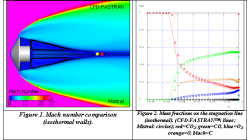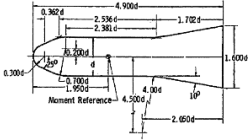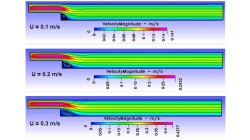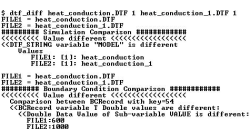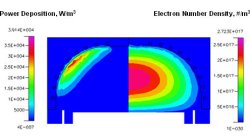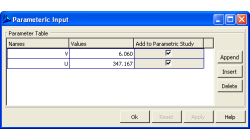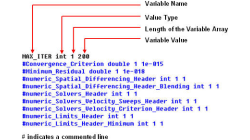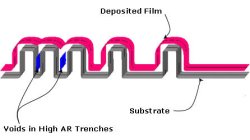- Home
- Resources
- Tips & Tricks
Tips & Tricks
Chemical-kinetic Model for Mars Atmosphere Re-entry Applications
The shock layer flow over a blunt body entering a planetary atmosphere at a hypersonic speed will dissociate and partially ionize. A reliable prediction of the flow-field for such application requires a chemical-kinetic model. For Mars atmosphere, the five species Park'94 is considered [1]. The dissociation of CO2 is producing C, CO, CO2, O and O2.
Abraham
Meganathan
CFD
Improvements to Parallel Simulation Setup in CFD-FASTRAN
Setting up and launching a parallel simulation has become much simpler and easier in FASTRAN. This note discusses some of these developments. Let’s start with things that have not changed. There are still two versions of CFD-FASTRAN solvers for parallel cases. The difference between the two versions is the underlying parallel communication mechanism, the choice of which is decided by the type of mesh used.
Abraham
Meganathan
CFD
Simulation of the Hypersonic Flow Past a Blunted Cone-cylinder-flare (HB-2) using CFD-FASTRAN
Study of supersonic flows is of high interest for a wide variety of problems including design of high speed planes and other related applications [1]. This user tip presents a validation of numerical methods against experimental data.
Abraham
Meganathan
CFD
Using "Visual Scaling" for Models with Drastically Varying Length Scales
For models that have drastically varying length scales, it can be difficult to create the grid, setup a model, and post-process the results. CFD-GEOM, CFD-ACE-GUI and CFD-VIEW have a "Visual Scale" capability that can significantly help when working with these types of models.
Abraham
Meganathan
CFD
Parametric Studies Using SimManager
Parametric studies are an important aspect of CFD analysis. Parametric studies are used to perform trend base analyses, optimize the deign of a device, and/or to study the affect of different parameters on a process (What if? type analysis).
Abraham
Meganathan
CFD
How to Compare the Model Setup Between Two DTF Files
Have you ever wanted to find the differences between two DTF files? If you have, then you will probably be interested in a DTF utility included in your ESI Software installation. The utility is called dtf_diff and can be found in your UTILS_2009.0/bin directory.
Abraham
Meganathan
CFD
CFD-ACE+ and CFD-TOPO Coupling
There is a growing demand and challenge in different industries, especially semiconductor and MEMS areas, to have increased wafer size with reduced feature size, i.e. high quality process uniformity.
Abraham
Meganathan
CFD
Parametric Studies with CFD-FASTRAN
CFD-FASTRAN-GUI has a new "Parametric Set Up" template that allows the user to run parametric cases. Most of the text input fields - including boundary conditions, properties, and solver control parameters - are available for parametric run. This allows the user to submit the parametric cases in one shot and post-process the results later on.
Abraham
Meganathan
CFD
DTF utility: the -vd and -ud options
The DTF utility offers several options for viewing and manipulating simulation data in a DTF file. Simulation data is essentially all settings that are not Volume Conditions or Boundary Conditions. By using a couple of DTF commands, you can update the data in the DTF file without opening it in CFD-ACE-GUI. In this tip, we will demonstrate how to use the -vd and -ud options of the DTF utility.
Abraham
Meganathan
CFD
CFD-TOPO: A Tool for Feature Scale Simulation of Semiconductor Processes
CFD-TOPO is a simulation tool that predicts how the shape of entities change due to the combined effects of chemical species transport and surface reactions at gas-solid interfaces. This application provides a wide array of tools to analyze the steps of a semiconductor process on the feature scale of a device (typically the order of micro-meter).
Abraham
Meganathan
CFD
